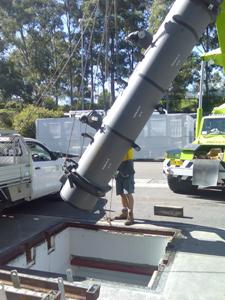Blog | Critical Air Refrigeration News
On average the HVAC system uses 25% of a building’s electricity.The slightest increase in cooling tower leaving water temperature will result in significantly higher energy costs.
1. Replace NozzlesBroken or clogged nozzles cause uneven water distribution over the fill, scale build up, and decreased capacity.2. Upgrade or Replace Drive ComponentsFor increased building heat loads, BAC’s drive upgrade kits will increase the capacity of your cooling tower. To maintain the peak performance of your cooling tower, replace your motors, drive sheaves, drive bushings and belts with BAC FactoryAuthorized Parts.3. Install New FillReplace scaled or clogged fill with BAC’s replacement fill kits that are designed with state of the art fill technology to restore or increase the capacity of your cooling tower.4. Install a VFDAdding a Variable Frequency Drive will provide a more efficient method of operating your cooling tower while extending the life of themotor and mechanical drive system.-

Stage 1
Modular Multistack Chiller to be stripped and removed. -

Stage 2
Multistack Chiller removed from plantroom and dismantled ready to be transported away from site. -

Stage 3
PowerPax Chiller being installed using a Crane and lowering it through a purpose built Access Tunnel. -

Stage 4
Chiller assembled and installation of PowerPax complete.
Indoor pool owners and operators often have ongoing problems with unsightly condensation seriously impacting the amenity and longevity of their pools. The corrosion corrodes certain pools surfaces, obstructs views through glass walls and windows and has a negative impact on the amenity in the pool. The condensation can become so bad it seems like it is raining inside the pool! The usual rectification methods often involve expensive to purchase and run dehumidifier equipment or detailed engineering including duct work and air conditioning plant changes. Find out more...
Related Tag: Commercial Air Conditioning Services Sydney
The phasing out of HCFCs (R22 Refrigerant) will affect everyone to some degree. The following information has been put together to inform you of the implications the phase out will have and what some of the options are when considering what to do in your future planning.
Implications of reduced supply
The implication is that R22 refrigerant will become more expensive as its availability decreases. In the past 3 years we have seen an increase in excess of 300% in the price of R22 per kilo.The rate of increase will depend on the demand which could in turn be driven by how the market responds to the phase out. This response can either be by replacing old equipment with new equipment that has refrigerant which is a R22 replacement. If this occurs in sufficient numbers there should be decrease in demand and in turn a possible slow-down in the rate of the price increase.The other possibility is that there could be an increase in demand due to maintenance requirements. If this happens the price will continue increasing at a similar rate as that of the current rate.Download the pdf for rmore information









